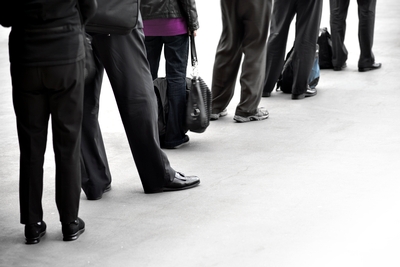Darn: Got in the wrong check-out line!
 If you’re like us, chances are you’ve got a litany of to-dos (or not) when trying to cash out at a store. Look for female cashiers. Get behind those with less than half-full carts. Avoid shoppers with kids. Re-jigger the number of items to qualify for the Express Lane.
If you’re like us, chances are you’ve got a litany of to-dos (or not) when trying to cash out at a store. Look for female cashiers. Get behind those with less than half-full carts. Avoid shoppers with kids. Re-jigger the number of items to qualify for the Express Lane.
Do these strategies work? Not always. So it should come as no surprise that brick-and-mortar retailers have made this a science, beginning with Little’s Law (calculating the wait of a particular line) and, perhaps, concluding with PayPal’s latest product, Beacon, recognizing your smartphone the minute you enter a store.
[Okay, we do shop online. But, somehow, Peapod just doesn’t get our produce right.]
Our point is the waiting. Once you hit three minutes, experts tell us, the perception of wait time multiplies exponentially. And patience isn’t our strong suit. If the queue takes too long, we’ll most probably abandon our purchases, mumble under our breaths about the store, and leave pronto.
Imagine, then, working with a team or a function or an enterprise during times of change. Say, undergoing an acquisition, when the deal itself might be moving at lightning speed, but the information isn’t. That wait time will be interminable for employees who don’t know their status, where they’ll be sitting, and/or what they’ll be doing. Granted, there are good and legal reasons for not releasing the information. On the other hand, it’s also humane to, at the very least, give workers an idea of the process, the calendar, and a wide swath of times when decisions will be made and communicated. Broadcasting factual information regularly mutes the gossip and discontent, and psychologically lessens the waiting time.
Then again it’s nice to linger by the “impulse buys” aisle …



